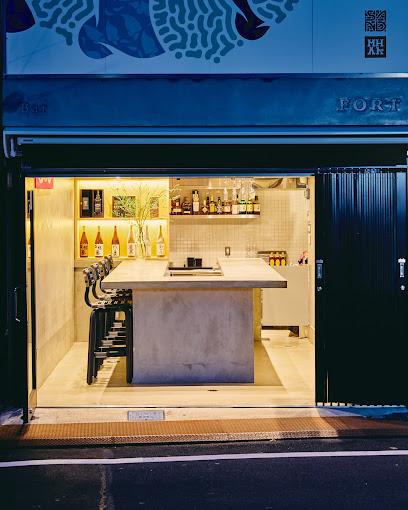
The Enchanting Jingū Bashi: A Bridge to Culture
Explore the serene Jingū Bashi, a beautiful bridge leading to Meiji Shrine, blending culture, nature, and stunning architecture in the heart of Tokyo.
Jingū Bashi, or Shrine Bridge, is a captivating pedestrian bridge in Tokyo's Shibuya district that beautifully connects visitors to the iconic Meiji Shrine. With its serene atmosphere and stunning architectural design, it offers a perfect blend of nature and urban life. As you stroll across the bridge, prepare to be mesmerized by the lush greenery that envelops the area, making it a peaceful retreat amidst the bustling city. Ideal for leisurely walks and picturesque photography, Jingū Bashi is a must-visit for tourists seeking an authentic Japanese cultural experience.
A brief summary to Jingū Bashi (Shrine Bridge)
- 6 Chome Jingumae, Shibuya City, 6 Chome Jingumae, Tokyo, 150-0001, JP
- Monday 12 am-12 am
- Tuesday 12 am-12 am
- Wednesday 12 am-12 am
- Thursday 12 am-12 am
- Friday 12 am-12 am
- Saturday 12 am-12 am
- Sunday 12 am-12 am
Local tips
- Visit during early morning or late afternoon for fewer crowds and the best light for photography.
- Don't miss the nearby Meiji Shrine; it's a short and scenic walk from the bridge.
- Take your time to enjoy the natural surroundings and consider bringing a picnic to enjoy in the adjacent park.
- Explore the bridge during cherry blossom season for a truly magical experience.
- Be mindful of the weather; a clear day offers the best views of the shrine and city skyline.
Getting There
-
Subway
If you're starting from Tokyo Station, take the Marunouchi Line (red line) from Tokyo Station. Travel in the direction of Ogikubo and get off at Shinjuku Station (about 15 minutes). Once at Shinjuku Station, transfer to the JR Yamanote Line (green line) and head towards Shibuya. Get off at Harajuku Station (3 stops). Upon exiting Harajuku Station, follow the signs for the Omotesando Exit.
-
Walking
After exiting Harajuku Station, head towards the Meiji Shrine, which is about a 10-minute walk. Walk straight down the main road (Meiji Dori) away from the station. When you reach the entrance to the Meiji Shrine, turn left and follow the path leading to the shrine site. Continue walking until you reach the Jingu Bashi (Shrine Bridge), which is situated directly in front of the main entrance to the Meiji Shrine.
-
Bus
From Shibuya Station, take the Keio Bus bound for 'Yoyogi Koen'. Get off at the 'Meiji Jingu Mae' stop. The bus ride takes about 10 minutes. Once you get off, you will see the entrance to the Meiji Shrine right ahead. Jingu Bashi (Shrine Bridge) is located just in front of the shrine entrance.
-
Taxi
If you prefer a more direct route, you can take a taxi from your current location. Just tell the driver 'Meiji Jingu' or 'Jingu Bashi'. Most taxi drivers in Tokyo understand these locations, and the ride should take around 15-20 minutes depending on traffic.
Discover more about Jingū Bashi (Shrine Bridge)
Iconic landmarks you can’t miss
Brahms Path
0.2 km
Discover the tranquil Brahms Path, a serene tourist attraction in Shibuya City, Tokyo, dedicated to the renowned composer Johannes Brahms.
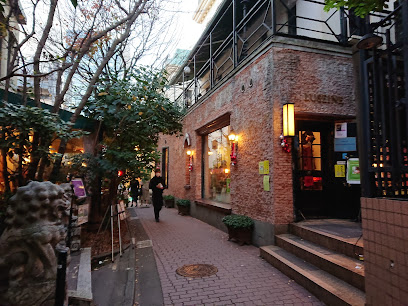
Cenotaph for the Submariners
0.3 km
Discover the Cenotaph for the Submariners in Tokyo: a historical landmark honoring the brave heroes of the Japanese Navy amidst the vibrant Shibuya district.
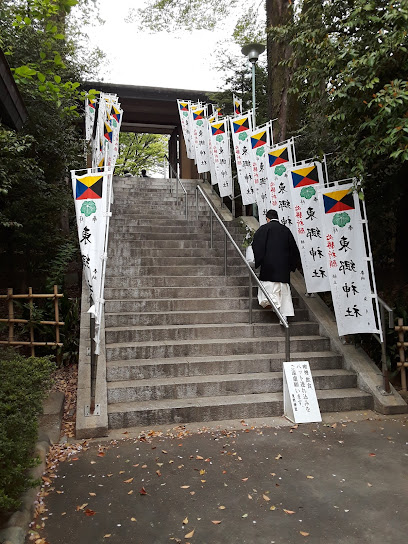
Shibuya Gate Observation Deck
0.5 km
Experience breathtaking views of Tokyo's skyline from the Shibuya Gate Observation Deck, a must-visit for all tourists exploring the vibrant city.
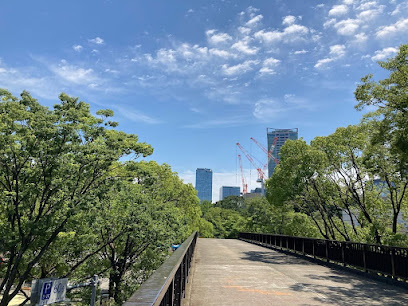
Kiyomasa's Well
0.7 km
Experience the serenity of Kiyomasa's Well, a historical landmark in Tokyo, where nature and culture intertwine beautifully.
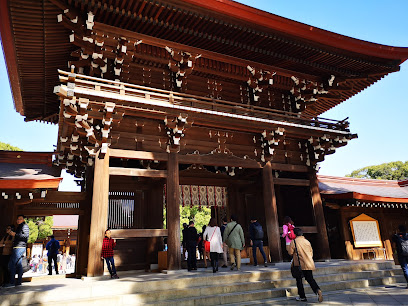
BINGO Shibuya MODI Store
0.9 km
Discover unique vintage fashion and stylish finds at BINGO Shibuya MODI Store, a must-visit destination for thrift lovers in Tokyo's vibrant Shibuya district.
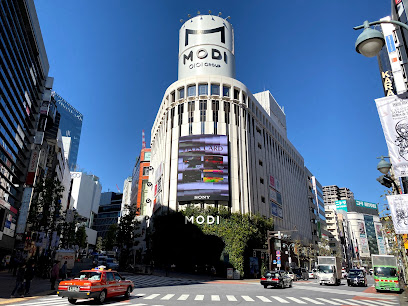
Shibuya Nonbei Yokocho
1.1 km
Discover the charm of Shibuya Nonbei Yokocho, where traditional izakayas and vibrant nightlife create a unique Tokyo experience.
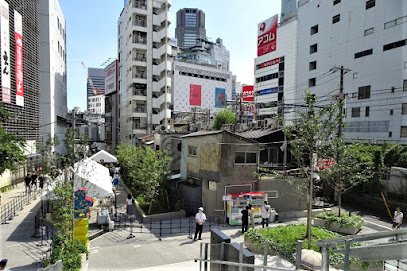
Shibuya Scramble Crossing
1.1 km
Immerse yourself in the vibrant heartbeat of Tokyo at Shibuya Scramble Crossing, a landmark of modern urban life and culture.

Hachiko Square
1.2 km
Discover Hachiko Square in Shibuya, Tokyo - a vibrant meeting point steeped in loyalty and urban energy, surrounded by shops and the famous Shibuya Crossing.
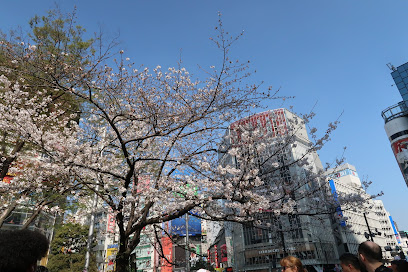
Hachikō Memorial Statue
1.2 km
Visit the iconic Hachikō Memorial Statue in Shibuya, Tokyo – a touching tribute to loyalty and love that captures the heart of every visitor.

Konnō-zaka Slope
1.2 km
Explore Konnō-zaka Slope, a historical gem in Shibuya, where tradition meets modernity in the heart of Tokyo's vibrant culture.
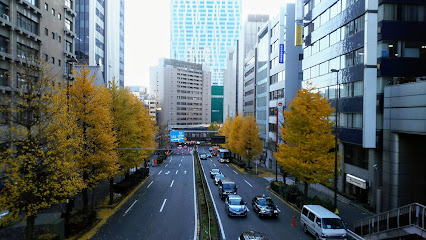
Treasure Museum
1.2 km
Explore the Treasure Museum in Shibuya, Tokyo, where Japan's rich history and cultural treasures come to life through captivating exhibits.
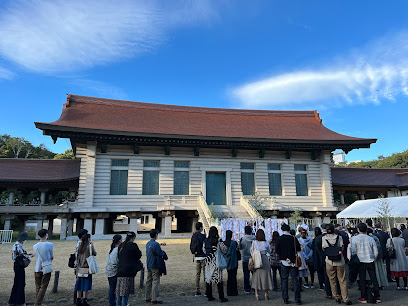
Myth of Tomorrow
1.2 km
Explore the vibrant 'Myth of Tomorrow' in Shibuya, a cultural landmark showcasing the iconic art of Taro Okamoto amidst Tokyo's dynamic urban landscape.
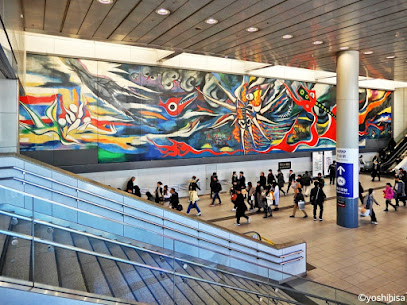
Shibuya Sky
1.2 km
Experience breathtaking 360-degree views of Tokyo from Shibuya Sky, the ultimate observation deck at Shibuya Scramble Square.
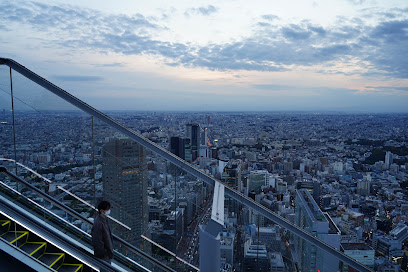
Moyai Statue
1.3 km
Discover the Moyai Statue in Shibuya: a stunning stone carving symbolizing friendship and a vibrant cultural experience in Tokyo.
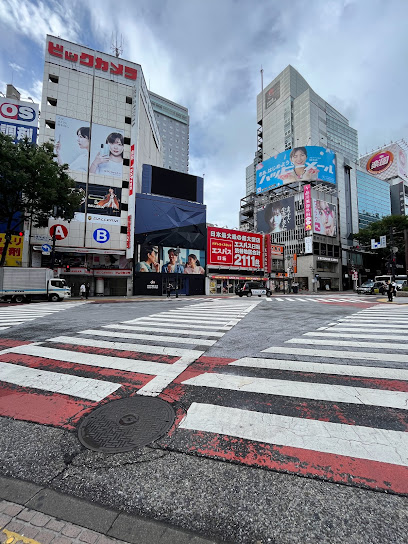
Hikage-zaka hill
1.3 km
Explore Hikage-zaka Hill in Shibuya, Tokyo—a historical landmark blending nature and culture with stunning views and a peaceful atmosphere.

Unmissable attractions to see
Cat Cafe MOCHA Harajuku
0.1 km
Experience the charm of Cat Cafe MOCHA in Harajuku, where delightful cats and gourmet coffee create the perfect escape in Tokyo's vibrant atmosphere.
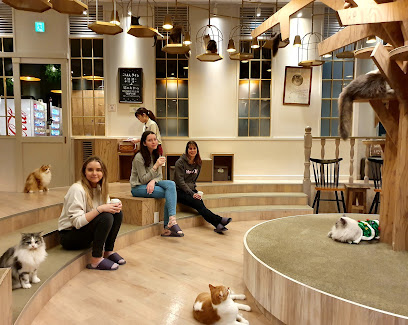
Meiji Jingu Ichino Torii
0.1 km
Explore the serene beauty of Meiji Jingu Ichino Torii, a tranquil Shinto shrine in the heart of Tokyo, surrounded by lush forests and rich history.

Hedgehog Cafe & Pet Store HARRY Harajuku
0.1 km
Experience the charm of hedgehogs at Hedgehog Cafe & Pet Store HARRY in Harajuku, a delightful retreat for animal lovers in Tokyo.
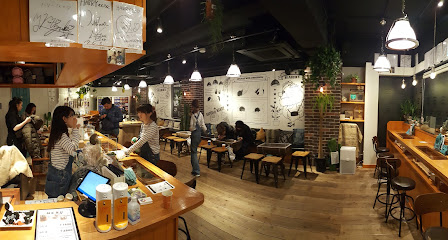
Yoyogi Park Clock Tower
0.2 km
Discover the beauty of Yoyogi Park Clock Tower, a serene landmark in Tokyo, blending history, architecture, and nature in a vibrant park setting.
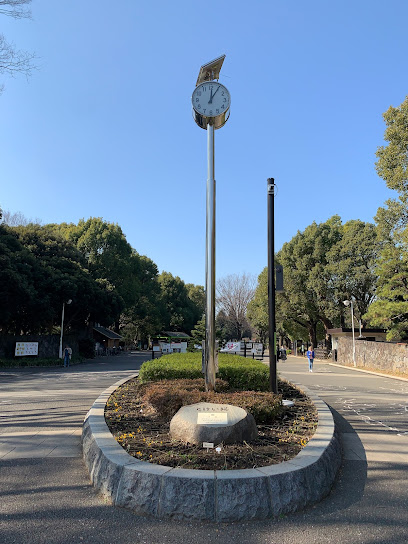
harajuku kawaii cafe LiQumu
0.2 km
Discover the enchanting world of kawaii at Harajuku's LiQumu Cafe, where delightful treats and whimsical decor come together for a unique experience.
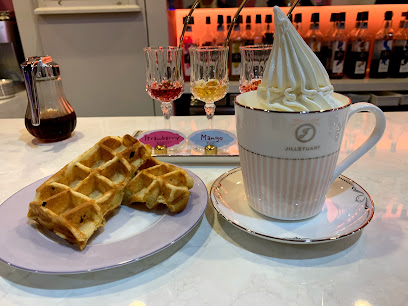
Takeshita Street Entrance Arch (Harajuku Station)
0.2 km
Explore the colorful Takeshita Street near Harajuku Station, a vibrant hub of fashion, culture, and delicious street food in the heart of Tokyo.
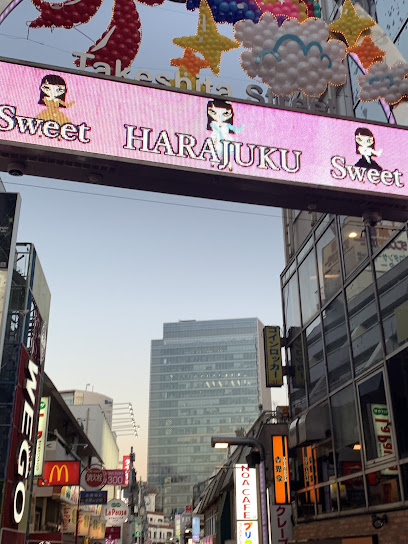
Ōta Memorial Museum of Art
0.2 km
Explore the Ota Memorial Museum of Art in Tokyo for an enchanting experience of Ukiyo-e, a captivating traditional Japanese art form.
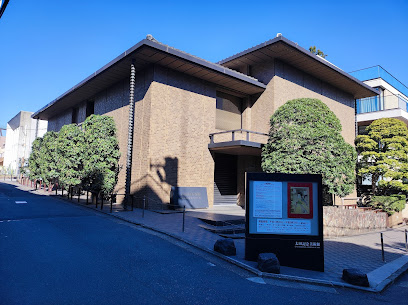
Takeshita Street Square
0.2 km
Explore Takeshita Street Square, Tokyo's vibrant market of eclectic fashion, delicious treats, and the pulse of youth culture in Harajuku.
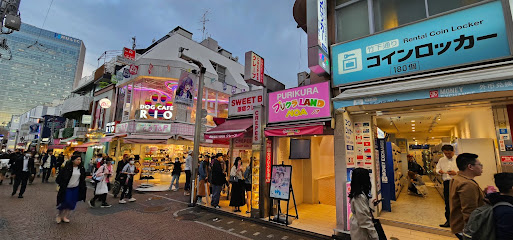
Meiji Jingu Shinkyo (Sacred Bridge)
0.2 km
Explore the serene Meiji Jingu Shinkyo, a sacred bridge that connects you to the tranquil beauty and rich traditions of Tokyo's spiritual heart.
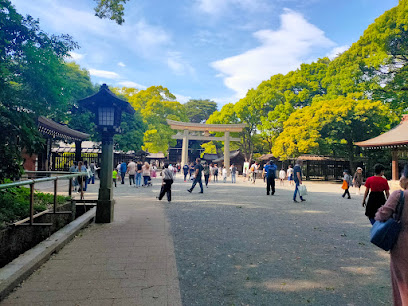
Harajuku Tourist Information Center
0.3 km
Discover the vibrant culture of Harajuku at the Tourist Information Center, your essential guide to Tokyo's eclectic sights and experiences.
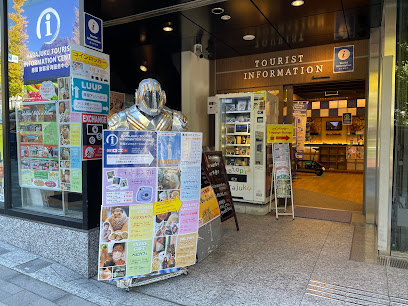
Prayer Room (HIS Tourist Information Center)
0.3 km
Discover tranquility in the heart of Tokyo at the Prayer Room, a sanctuary for Muslim travelers seeking spiritual solace during their journey.
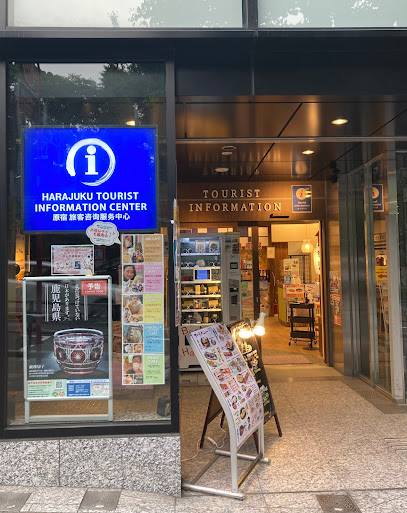
Harajuku Kawaii Land Kyun Kyun Animal Petting
0.3 km
Discover a whimsical animal petting experience in the heart of Shibuya, where playful interactions with adorable pets await every visitor.
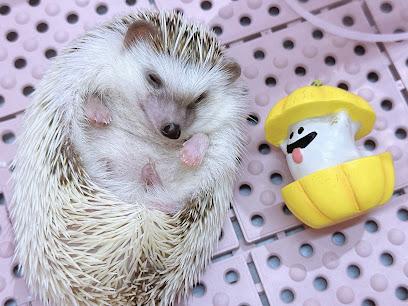
Takeshita Street
0.3 km
Explore Takeshita Street, Tokyo's vibrant hub of youth culture, fashion, and delicious street food in the heart of Harajuku.
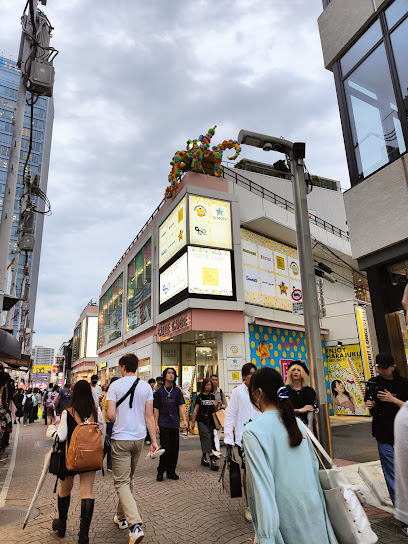
Marion Crêpes Takeshitadori
0.3 km
Experience the delicious flavors of Marion Crêpes Takeshitadori, a must-visit crêperie in the heart of Tokyo's vibrant Harajuku district.
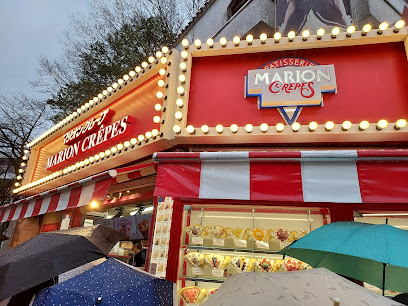
Pompompurin Cafe
0.3 km
Experience the whimsical charm of Pompompurin Cafe in Harajuku, Tokyo, where delightful themed dishes and adorable decor await every visitor.
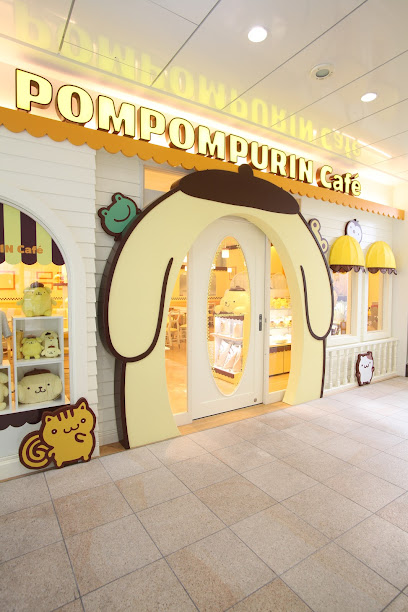
Essential places to dine
LAS DOS CARAS MODERN MEXICANO Y TACOS
0.1 km
Discover the vibrant flavors of Mexico at Las Dos Caras Modern Mexicano y Tacos in Tokyo's Shibuya district - where tradition meets modernity.
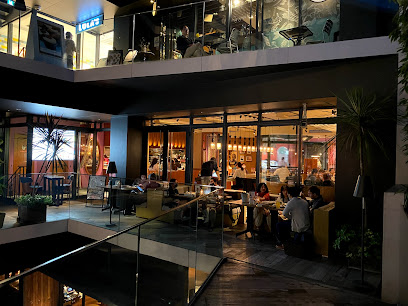
OKU
0.3 km
Discover authentic Japanese flavors at OKU in Tokyo's vibrant Shibuya district - where tradition meets taste.
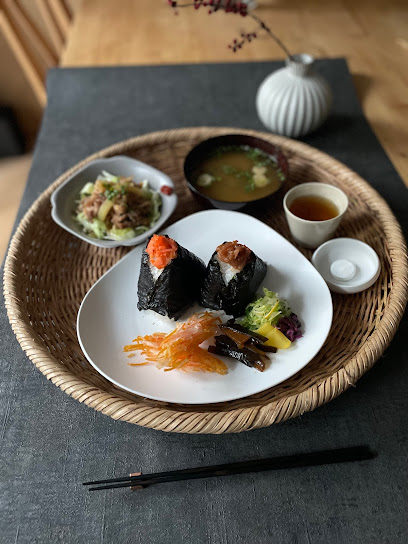
Chiles Mexican Grill Harajuku
0.3 km
Experience authentic Mexican flavors at Chiles Mexican Grill in Harajuku - where every bite transports you to Mexico!
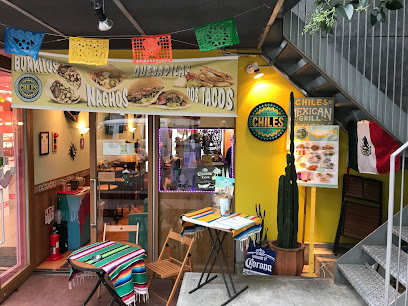
Roast Beef Ohno Harajuku
0.3 km
Discover the unique flavors of Japan at Roast Beef Ohno in Harajuku – where tradition meets modern taste!
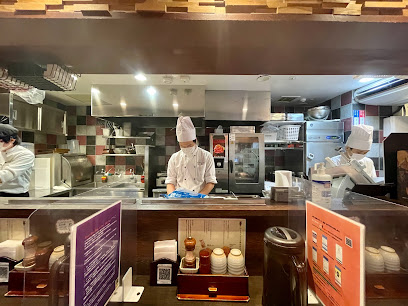
Eggs 'n Things
0.4 km
Experience Hawaiian hospitality at Eggs 'n Things in Harajuku, Tokyo - where delicious breakfast meets vibrant culture.

AFURI Harajuku
0.4 km
Experience the exquisite taste of yuzu-infused ramen at AFURI Harajuku – where tradition meets innovation in every bowl.
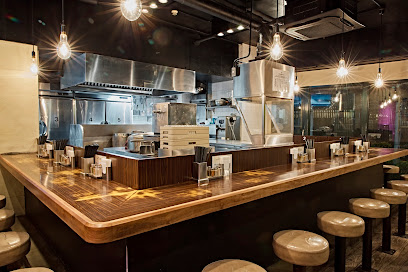
Oden curry
0.4 km
Experience a delicious fusion of traditional oden and rich curry flavors at Oden Curry in Shibuya, Tokyo.

Harajuku Gyozaro
0.4 km
Discover authentic Chinese cuisine at Harajuku Gyozaro, where delectable dumplings meet Tokyo's vibrant atmosphere.

MUSHROOM TOKYO
0.4 km
Experience the best of Italian vegetarian cuisine in Shibuya at Mushroom Tokyo – where every dish is crafted with love and fresh ingredients.
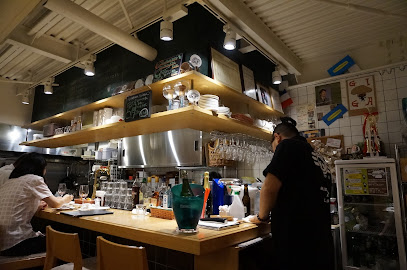
Omotesando Ukai Tei
0.5 km
Discover the exquisite flavors of Teppanyaki at Ukai Tei in Omotesando – where culinary artistry meets elegance.

Red Rock Harajuku
0.5 km
Experience authentic Japanese flavors with exquisite gyudon and steak dishes at Red Rock Harajuku, a must-visit culinary gem in Tokyo.
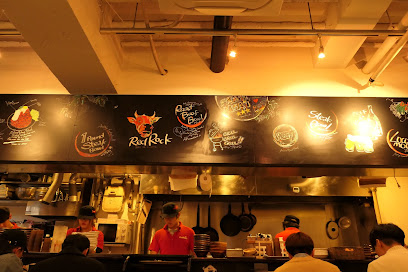
Restaurant Hyene
0.6 km
Experience the elegance of French cuisine at Restaurant Hyene in Shibuya - where every dish is a masterpiece.
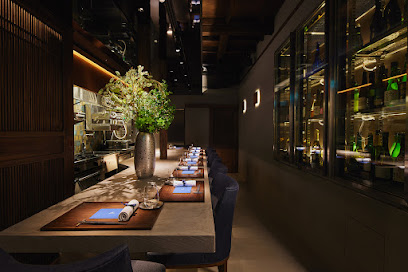
Sakura-tei
0.6 km
Experience authentic izakaya dining at Sakura-tei in Shibuya—where traditional Japanese flavors come alive in a lively setting.
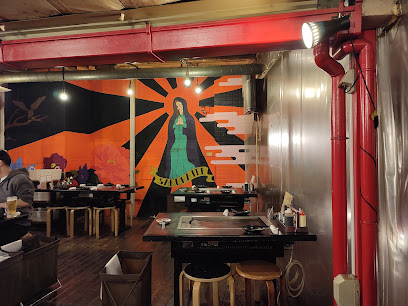
Genmai Udon
0.6 km
Discover authentic handmade udon and traditional Japanese flavors at Genmai Udon in Tokyo's lively Shibuya district.

ROOF TOP RESTAURANT & MUSIC BAR SOAK
0.7 km
Experience exquisite dining and breathtaking views at Tokyo's premier rooftop restaurant and music bar.
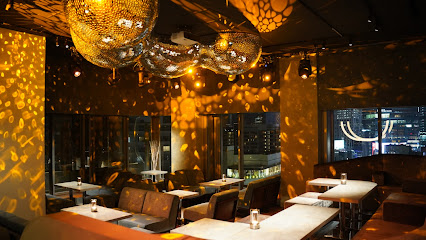
Markets, malls and hidden boutiques
Harajuku Station
0.0 km
Explore the vibrant heart of Tokyo's youth culture at Harajuku Station, your gateway to fashion, food, and iconic sights.
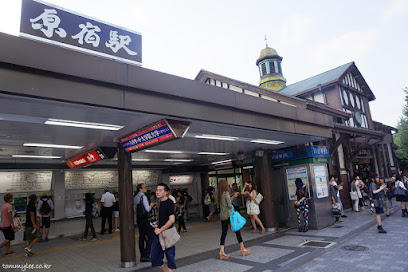
UNIQLO Harajuku
0.1 km
Explore trendy fashion and floral delights at UNIQLO Harajuku, Tokyo's iconic shopping destination for style-savvy tourists.
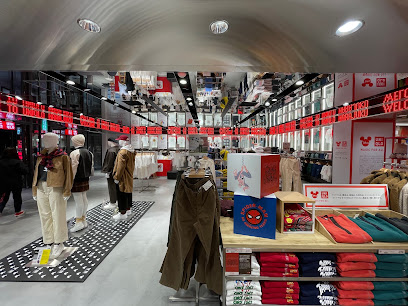
PICNIC Harajuku Shop
0.2 km
Discover unique fashion, quirky souvenirs, and Japanese pop culture at PICNIC Harajuku Shop, the ultimate variety store experience in Tokyo.
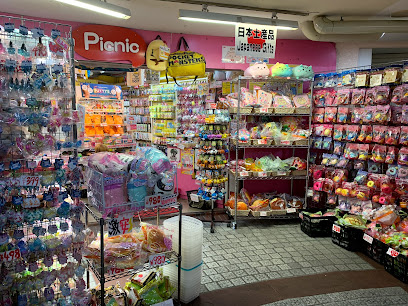
THANK YOU MART Harajuku ALTA Store
0.2 km
Explore a vibrant collection of trendy gifts, fashion, and accessories at THANK YOU MART Harajuku ALTA Store in Tokyo's iconic district.
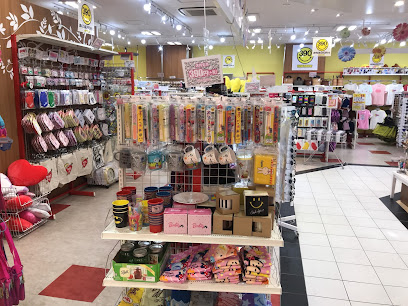
MESH tokyo
0.3 km
Discover the enchanting world of toys at MESH Tokyo, a vibrant store in Shibuya that captivates children and adults alike.
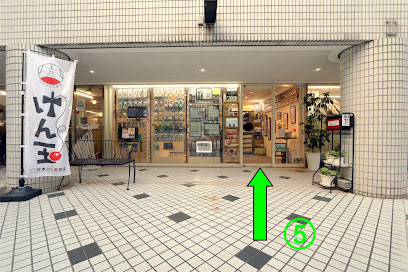
Sanrio Cute Cube Harajuku
0.3 km
Discover the enchanting world of Sanrio at Cute Cube Harajuku, a gift shop filled with iconic characters, plush toys, and exclusive merchandise.

NUBIAN HARAJUKU
0.3 km
Discover unique fashion at Nubian Harajuku, the ultimate clothing store experience in Tokyo's vibrant Harajuku district.

Kinji Used Clothing Harajuku Branch
0.3 km
Explore the vibrant world of vintage fashion at Kinji Used Clothing in Harajuku, where unique styles meet cozy cafe vibes.

BRAND COLLECT HARAJUKU TAKESHITA STREET
0.4 km
Uncover unique vintage clothing and stylish accessories at BRAND COLLECT Harajuku, a treasure trove for fashion enthusiasts in Tokyo.

Base Yard Tokyo
0.4 km
Discover a vibrant shopping haven in Shibuya, featuring a unique blend of bookstores and eclectic general stores at Base Yard Tokyo.
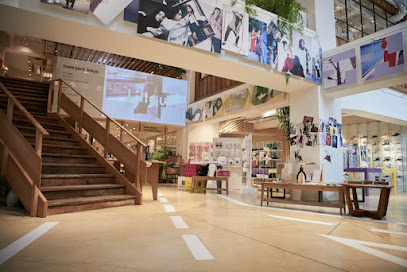
6% Doki Doki
0.4 km
Discover the vibrant world of Japanese street fashion at 6% Doki Doki, where whimsical designs and unique styles come to life in the heart of Shibuya.
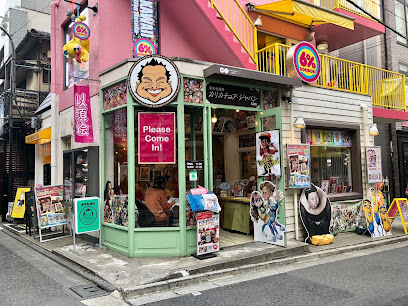
The bingo brothers
0.4 km
Discover unique fashion pieces that reflect Tokyo's vibrant street culture at The Bingo Brothers in Shibuya.
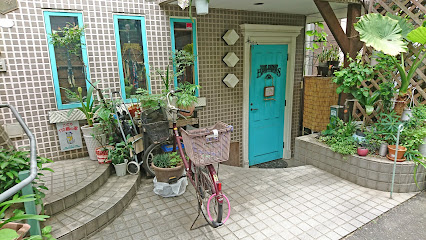
kindal harajuku second hand store
0.4 km
Explore the heart of Harajuku with Kindal's unique selection of vintage and second-hand clothing, perfect for fashion enthusiasts and thrifty shoppers.
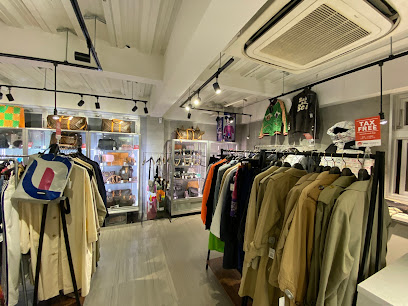
RAGTAG
0.5 km
Discover unique fashion treasures at RAGTAG, Tokyo's premier used clothing store, offering a curated selection of men's and women's vintage apparel and accessories.
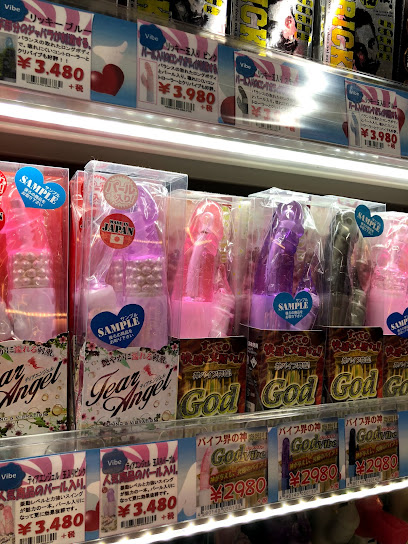
Oriental Bazaar
0.5 km
Explore the Oriental Bazaar in Tokyo for authentic souvenirs, antiques, and a unique shopping experience that captures the spirit of Japan.
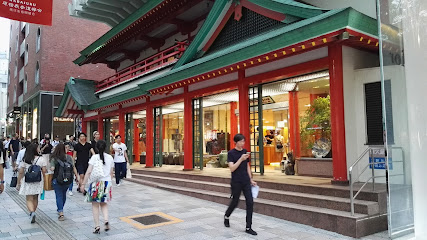
Essential bars & hidden hideouts
Baird Beer Harajuku Taproom (ベアードビール原宿タップルーム)
0.3 km
Discover the best of Tokyo's craft beer scene at Baird Beer Harajuku Taproom, where local brews meet a cozy ambiance.
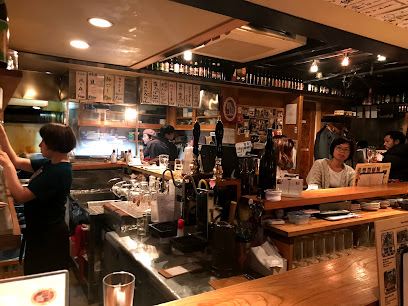
JOINT HARAJUKU Bar&Gallery
0.4 km
Discover JOINT HARAJUKU: A unique fusion of art and nightlife in the heart of Tokyo's vibrant Harajuku district.
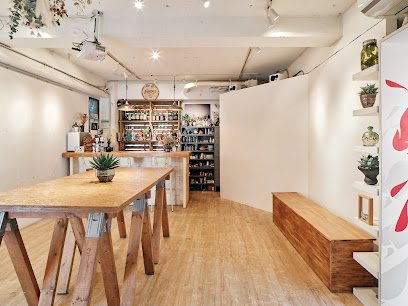
Moch
0.4 km
Discover Moch, a vibrant bar in Shibuya offering a perfect blend of modern cocktails and a lively atmosphere to enjoy Tokyo's nightlife.
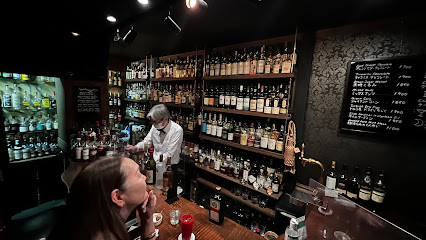
原宿Rock Bar HALF MOON
0.5 km
Discover the lively atmosphere of 原宿 Rock Bar HALF MOON, where great music and friendly vibes create unforgettable nightlife in Tokyo.
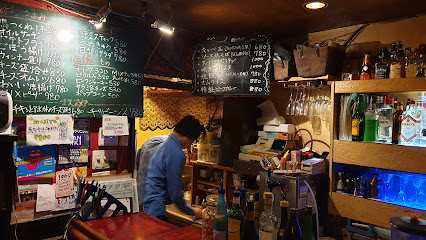
Bar SOUL B
0.5 km
Discover the vibrant nightlife at Bar SOUL B in Shibuya, where eclectic drinks meet a welcoming atmosphere, perfect for socializing and relaxation.
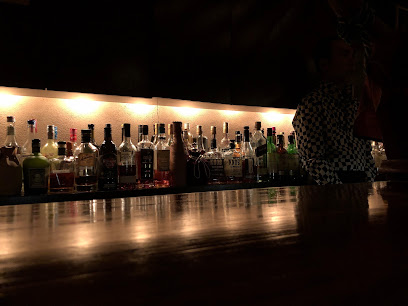
Bar Subterraneans
0.5 km
Discover the vibrant nightlife of Tokyo at Bar Subterraneans, a lively bar featuring live music and DJ performances in Shibuya's underground scene.

PDX Taproom
0.6 km
Experience the best of craft beer culture at PDX Taproom, a vibrant brewpub in Shibuya, Tokyo, offering a diverse selection of local and international brews.
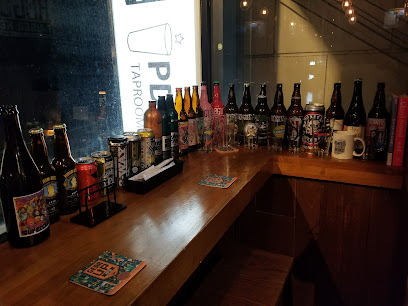
The SG Club
0.7 km
Experience the art of mixology at The SG Club, a top cocktail bar in Shibuya, Tokyo, offering innovative drinks in a chic setting.
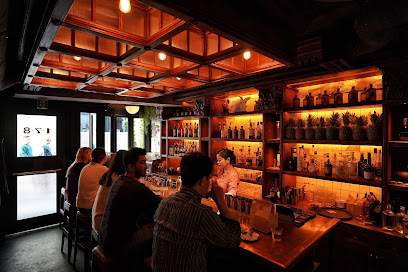
UA BAR
0.7 km
Discover the stylish UA BAR in Shibuya, where fashion meets flavor in an unforgettable cocktail experience.
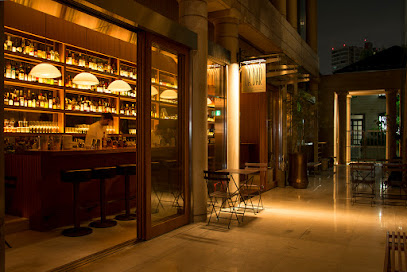
Bar werk
0.7 km
Discover the vibrant atmosphere of Bar Werk in Shibuya, Tokyo, where exquisite cocktails and a lively ambiance await you.
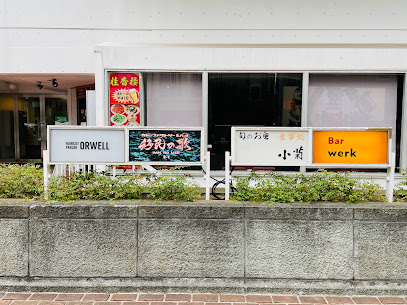
MUSIC BAR ROCKAHOLIC Shibuya
0.9 km
MUSIC BAR ROCKAHOLIC Shibuya: Embrace the rhythm of Tokyo's nightlife with live music and a vibrant atmosphere in the heart of Shibuya.
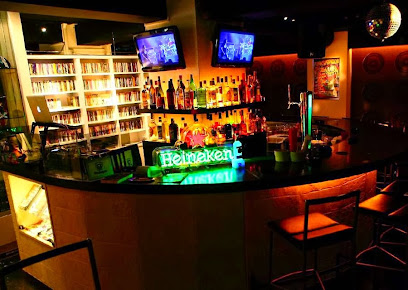
COCORO DOKORO (shibuya music bar)
0.9 km
Dive into Shibuya's music scene at COCORO DOKORO, where live rock performances and vibrant nightlife await every visitor.
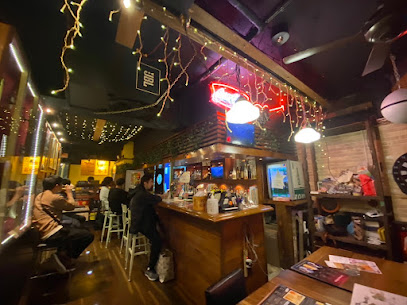
Bar After S'ayak
1.0 km
Discover the hidden charm of Bar After S'ayak in Shibuya, Tokyo, where expertly crafted cocktails meet a cozy atmosphere.
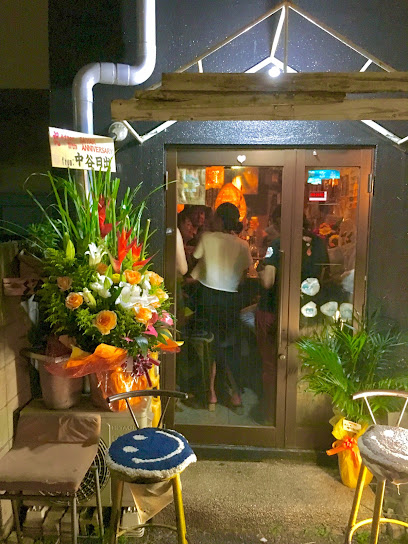
LIQUID FACTORY
1.0 km
Discover the vibrant Liquid Factory in Shibuya, Tokyo, where innovative drinks meet a lively atmosphere for an unforgettable experience.
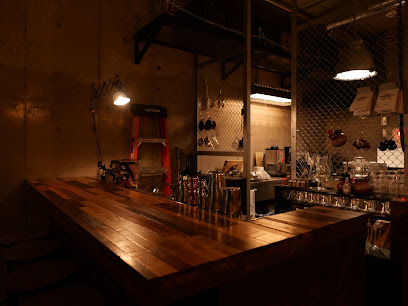
Bar FORT
1.0 km
Discover the charm of Bar FORT in Shibuya, where exquisite cocktails and a cozy ambiance create an unforgettable Tokyo nightlife experience.
